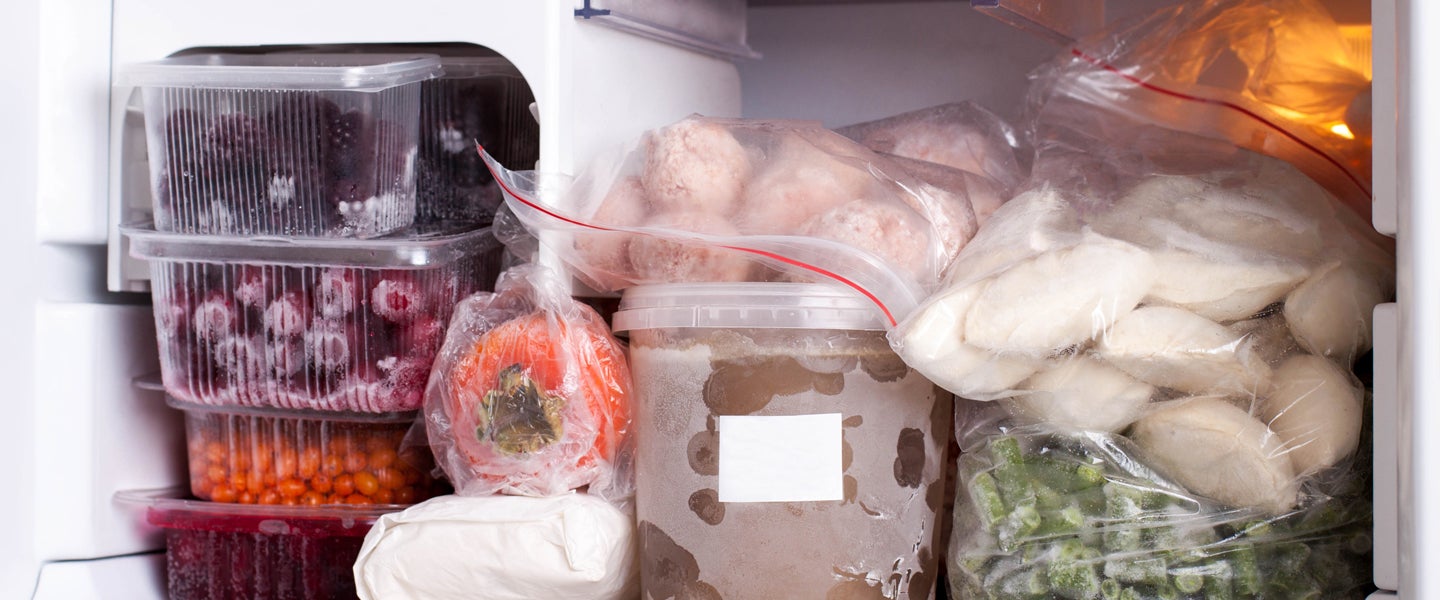Freezing food is an excellent way to extend its lifetime while preserving its nutritional value; an expert move for anyone holed up in their homes, stress eating like never before as quarantine persists. As a rule of thumb, raw meat, cooked meat, prepared foods and just about anything else you store in the frozen tundra known as your freezer will hold for at least three months before showing signs of freezer burn — and even then, many frozen foods are safely edible for a year, if not longer.
The one common downside of freezing food, though, is that a few months in the freezer can transform your once-delectable, easy, healthy freezer meals into insipid mush.
Rarely, however, is this the unavoidable result of freezing food, but rather a consequence of how you go about freezing your food. To help us all learn how to use our freezers a little better, I asked Karrie Truman, author of Seriously Good Freezer Meals: 150 Easy Recipes to Save Your Time, Money and Sanity, for a lesson in flavorful freezing.
First up, how to freeze foods in a way that actually maintains their flavor, rather than sending it away into some deep, frozen void…
Tip #1: Vacuum Seal Your Meats
If you want to freeze some nice, thick meat without converting it into a tasteless piece of cardboard, Truman says, “It’s best to not freeze the meat in the store packaging. Instead, use a vacuum sealer, wrap it in freezer paper or place it in freezer-safe bags, removing as much air as possible.” As dietitian Abbey Sharp explained in our previous article about frozen meat, vacuum sealing helps meat freeze evenly and without the detracting presence of air, whereas, “If meat is allowed to freeze slowly or incompletely, it forms large ice crystals that can damage the muscle fibers and cause moisture loss when thawed and cooked.”
Tip #2: Blanch Your Vegetables Before Freezing Them
Truman emphasizes that “you should never freeze raw vegetables, unless they’ve been blanched — this applies to almost all vegetables. Blanching is a quick-cooking, then flash-cooling method, that seals in color, vitamins, texture and flavor. You can freeze carrots, broccoli, corn, stir-fry veggies, peas and many more. You don’t have to blanch diced onions, celery, bell peppers, mushrooms, green onions or grated zucchini.”
Truman also notes that vegetables like lettuce, cabbage and radishes, which have a high water content, fare poorly in the freezer, so you just have to make do with those living a briefer life in your fridge.
How to Make Easy, Healthy Freezer Meals
So, now that you know how to stock your freezer with meats and vegetables that will actually taste good when you take them out, Truman says you can easily use them to whip up an array of delectable meals in a pinch. She sends me this tidbit from her blog to explain how:
“So many things can be frozen, including browned meat, raw hamburger patties, marinated and grilled chicken, many fruits and vegetables, cooked beans, rice and more. By freezing individual ingredients, you can add them to many recipes quickly and easily. For example, if you were to brown ground beef and freeze it, it can then be quickly and easily added to many recipes, including tacos, pizza, soups/stews, spaghetti sauce and more. By browning a few pounds of ground beef all at once, you can freeze the meat in individual portions, and then quickly add it to recipes to save a step.”
If you want to freeze a whole, ready meal, Truman is a fan of doing that as well. “I’m all about making ‘ahead’ meals; however, I don’t cook them, then freeze them. Usually, I prepare the meal and freeze it in its uncooked state, so that on cooking day, it’s easy to just toss in the oven, and you have a tasty, easy dinner.” By freezing them in their uncooked, but prepared state — either storing all of the individual ingredients in separate freezer bags, or allowing them to marinade together in the same bag — you still achieve that freshly-made experience when you eventually go to cook them. But the cooking process is incredibly easy: Just pour the whole bag in a pan, or in an oven tray, and voilà.
Truman has an array of blog posts dedicated to complete, but uncooked meals that you can prepare, then freeze for later, but she tells me that a few of her favorites are Homemade Easy Lasagna, Chicken Pot Pie and Chicken Burrito Bowls, all of which you can freeze in their prepared states, then cook up whenever you feel the munchies coming on.
Now the only problem left is…


